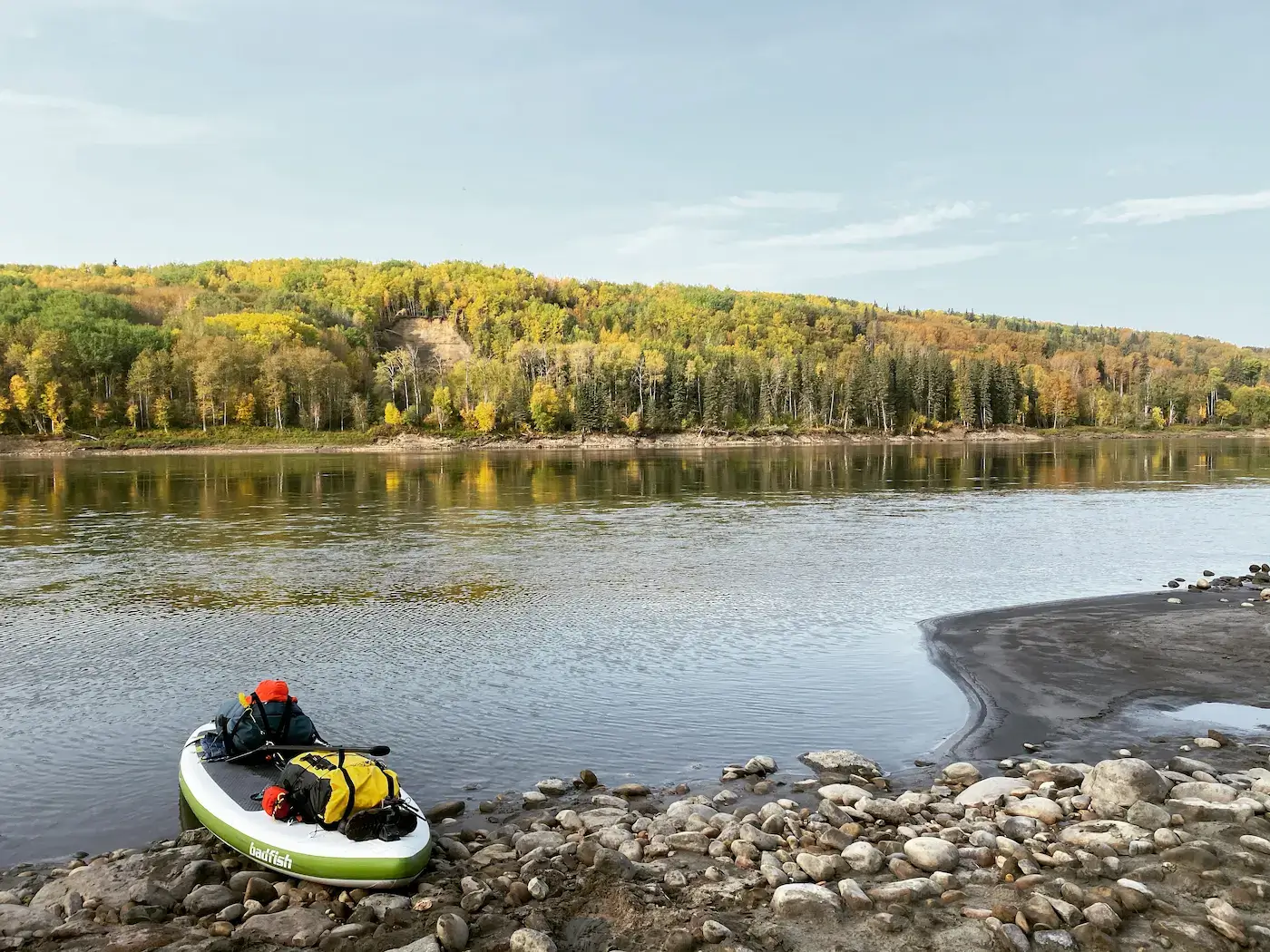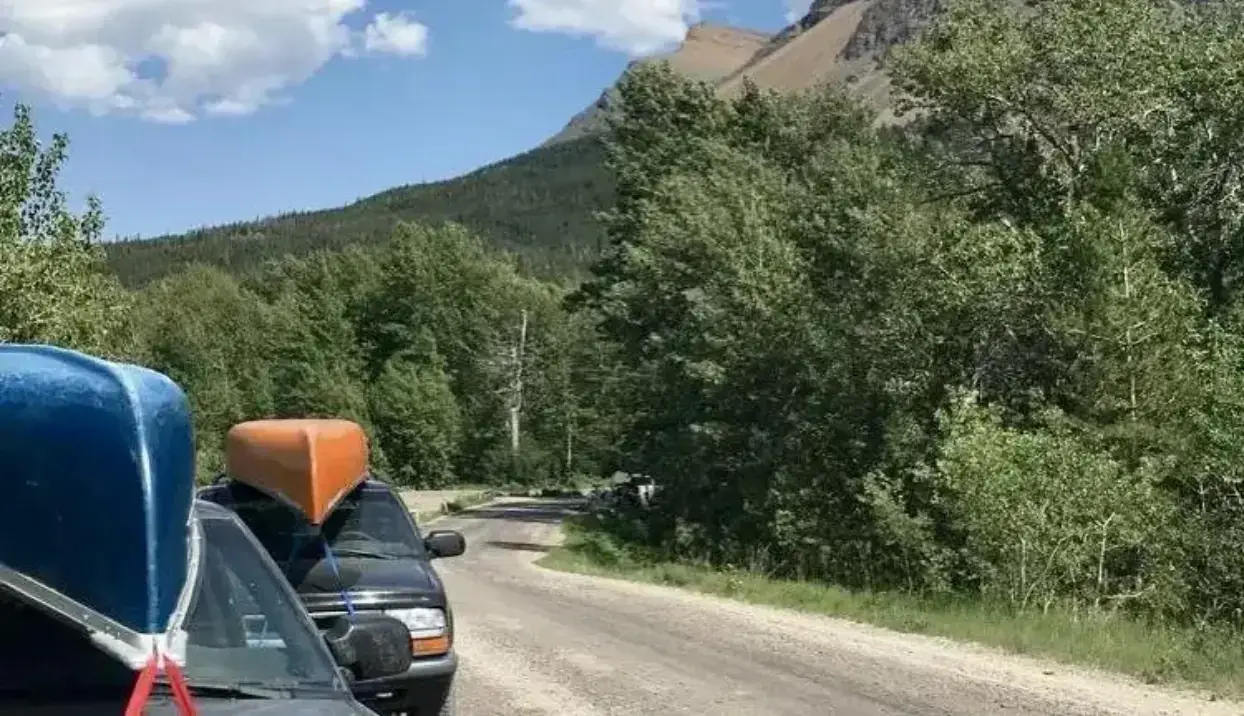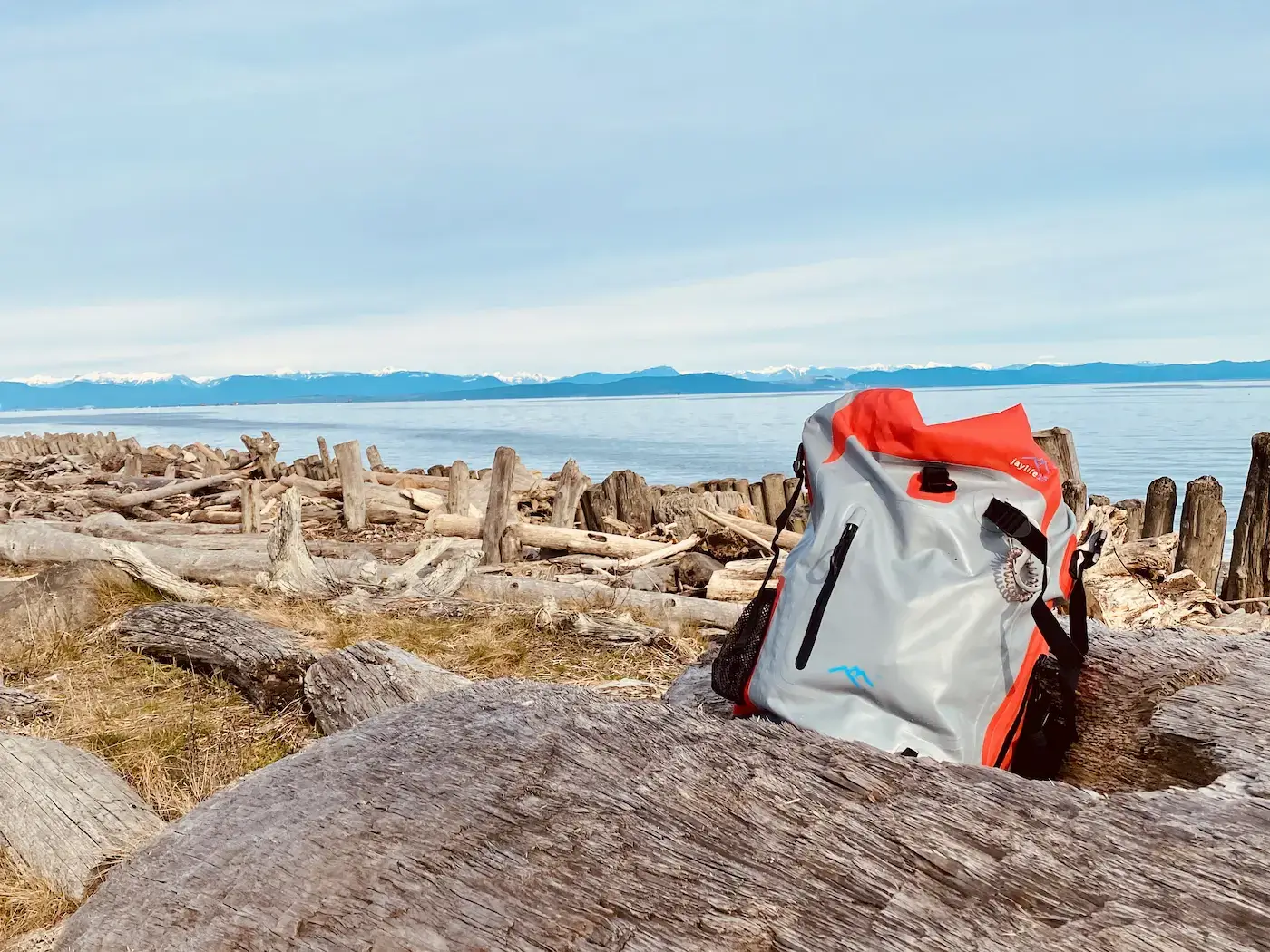Living in a seasonal climate, winter is often the time that my paddle preparations begin for the following season.
Whether you’re taking some time to plan your first canoe, raft, kayak, SUP trip or you have three days to pull some gear together to hit the water with friends on a whim, this paddling trip guide will help you out.
However you intend to plan your first paddle trip, here are some helpful tips that will make your life simpler on the water.
Guide for Planning Your First Paddling Trip
1. Finding Data for Your Paddling Trip
Gathering information is the most critical portion of paddling trip planning; ideally from someone who has recently been out on the waterbody you wish to travel. The outdoor world is in a constant state of flux between wind, water or fire. Find out what has changed before heading out.
Planning a River Paddling Trip
Rivers are constantly changing, sometimes in small and sometimes in big ways. These can sometimes take effect within a 24 hour period.
Considerations
What are the ideal flow rates for your camping spots?
High water may mean less accessible camping areas, low water may limit your ability to camp around islands if there’s low water around them.
Safe water levels for paddling?
Find out what m3/s (cubic meter per second) is a safe flow rate for the features you may encounter. Will a rapid be flushed out or become a hole? For more information about river features, check out Reading the River.
How treacherous are the portages?
A short, regularly maintained portage is different from bushwacking 2 km through an unused trail. Pack accordingly and prepare mentally.
Put-in/take out access?
How long of a shuttle is it for the people driving? Are these access points easy to get to, or do they require a 4X4 vehicle?
Does your watercraft perform well in a moving current? Is it designed for this use? Not all watercrafts are created equal, so make sure yours is intended for river use.
These are all important points to understand and research before you set off downstream on your first river paddling trip.
Some of my best sources of information for river systems have been from jet boaters, as they run rivers consistently. They have seen the water at flood, low levels and generally have the most reliable data, by far, IF the river you wish to access is used by them.
For other information on rivers not run by jet boats try contacting raft companies, guides or locals who can give you real time data and feedback to help you plan your trip.
Resource: Mark’s Guide For Alberta Paddlers 2nd Edition
Mark's Guide for Alberta Paddlers (3rd ed.)

$44.00
Mark's Guide for Alberta Paddlers (3rd edition) is a thorough publication of over 60 different rivers to paddle throughout Alberta. The author Mark Lund has noted in meticulous detail put-ins, take-outs, rapids, highlights and so much more. It's hard to… Read More
Planning a Lake Paddling Trip
We perceive lakes as safer than rivers, however, much can go wrong.
Considerations
How far is the lake crossing?
Rivers have a high level of risk but it’s never more than a kilometer or so to shore. If the weather changes while you’re crossing an open lake, the wind could take you far away from where you planned to go
Can you paddle in the wind?
Wind is a factor on all water bodies, but especially lakes. Is your paddling skill capable of paddling on one side for hours? Being proficient in wind takes a lot of practice. Wind can quickly ruin a fun adventure, or even flip a watercraft.
Are you portaging or moving sites?
Packing changes based on how much we are moving, loading, unloading. It may seem unimportant now, but as you begin to resent all the extra weight you're moving on land with each portage, you reassess what is important and what you could have left behind.
Will other boaters be a risk?
Other boaters, much to our chagrin, are unaware of their effect on human-powered paddlers. A wake from a wakesurfing boat can swamp you.
Another common theme on the water is alcohol and boating. This leaves the onus on us to make sure we are seen on the water and keep a wide berth from motorboats.
The Lakeland Paddle Circuit is a good example of inland paddling that requires portages through a lake system. Setting out last year I was prepared for a tough portage through a section that was “closed,” meaning it’s no longer maintained by the government. Friends who had gone out the week prior let me know the conditions, that way I was ready for it. Mentally, this made it easier knowing what to expect.
Resource: Paddling Maps
Planning an Ocean Paddling Trip
Considerations
Are you competent at reading tide charts?
Understanding the changing tides and when you can approach or depart land is imperative.
Do you have communication for weather and warnings?
Having a VHF Radio gives you the ability to communicate with other boats, check the weather, and understand swell warnings.
Are you a good navigator?
Fog, storms or large open crossings may make it impossible to see land or find your bearings. Being able to navigate is a non-negotiable item out on the ocean.
Is an ocean environment something you're comfortable paddling in?
Have you practiced landing out of the surf with a fully loaded boat? It’s important to know your limits.
Is your watercraft suited for an ocean environment?
Ensure you have a larger boat for ocean paddling. For overnight paddle trips, a small plastic kayak most likely won’t suffice and it will not handle ocean environments safely.
Resource: Neil Gilson SUP Coast Expedition Skills
Paddling Trip Tips for All Waterbodies
Considerations
What facilities exist where you are headed?
Are there fire pits, picnic tables, bear lockers, potty? These exist on many paddle circuits, however on a river trip unless you pre-plan to find cabins or pre-existing camps you may be random camping.
Are you headed out into the wilderness random camping?
Knowing how to manage fire, your human waste, food and waste water are all important skills
Can you have a fire? Is it wildfire season? Are any fires burning close to you before you go? Will you be able to have a fire for warmth or cooking?
This determines how you pack for cooking.
Do you like bugs?
Time of year matters. June to July in the north is abysmal for insects.
These considerations will determine what extras you need to pack.
Resources: Government Pages related to the area you’re travelling. Also feel free to contact Fish and Wildlife Officers for recent data.
2. Weather Watching for Paddling Trips
Weather is the biggest factor while out on a paddling trip. It has a big effect on what you need to pack and bring with you. Keep an eye on the weather as your trip approaches, because it can change what’s in your bag.
Considerations
Do I need a full rain suit or just a jacket?
Packing extra redundant gear isn’t worth it. If the weather is forecasted at 30C for the whole trip take a rain jacket for a wind barrier, but ditch a full set.
Warm gear?
There is a difference between packing warm clothing for the evening and having a full set of gear for trips near freezing.
Extra tarps?
Really, you can never have too many tarps! I like to have at least two on a trip for setting my gear on when loading up dry bags, for sitting on, for tarping over the eating area, or even for an impromptu tent fly; they have limitless applications and take very little room. But if it’s a rainy trip I ensure I have enough to set up camp comfortably.
Is it a drysuit trip?
Drysuits are amazing but they are bulky to pack if you’re not wearing it for the whole paddling trip. A great compromise is a Farmer Jane/John wetsuit with a dry top.
Generally, as my trip draws nearer, I have extra gear laid out. If the weather is favourable I sift through what I need and don’t. Preventing hypothermia is always your biggest concern, as it is the number one cause of mortality in the backcountry.
Non-negotiable items to always pack with you
- Full set of dry clothing (usually my sleeping long underwear)
- Rain jacket
- Head covering
- Gloves
This is all in addition to what you’re usually wearing.
Once out in the wilderness I can check the weather on my phone, VHF radio or InReach. This is important because it can help you plan your departure time for the next day, based on wind or storms. Whether you linger in camp with a coffee or get out of camp quickly to beat strong headwinds is determined by the weather.
3. Gathering Gear for Paddling Trips
Considerations
Do: Borrow! Before you run out and spend thousands on gear, reach out to friends like myself drowning in gear. Or find stores that rent it.
Do: Hit up AQ Outdoors when they have their annual gear swap, you can get gear at a fraction of the cost.
Do: Check your old gear before you go. Last year I slept in my solo tent with my rain jacket on while it rained inside as hard as it was outside. The waterproofing had deteriorated because I hadn’t used it for ten years. I revamped it as soon as I got home.
Don’t: Buy new gear without trying it out first, set up your tent so it’s easy to do when you go. Check mats or inflatable gear for holes even if it’s new it can have product failures.
Don’t: Run to the nearest box store to buy cheap camping gear. In general it’s bulky and performs poorly. You’ll spend twice the money on gear when this stuff fails and you end up buying quality equipment later.
Don’t: Assume it’ll all fit in your watercraft. Pre-pack – go out on the water for a trial paddle testing where it travels the smoothest.
4. Backpacking On Water for Multi-Day Paddling Trips
It’s irrelevant if it’s a canoe, kayak or SUP; YOU are still the motor moving it through the water.
Consider backcountry paddling akin to backpacking on water. While out on the West Coast Trail I packed everything I needed for 6 days in a 80L pack. Technically, I shouldn’t need much more than that for a trip out on the water. Yes, I do take a few bulkier items but not necessarily heavy ones.
Considerations
How long is your trip?
Food is always the heaviest portion, so plan to have an extra day of rations at most. The rest of the gear stays the same no matter the duration. One night or ten, you still need the same basics.
Drinking water?
Unless you have deemed the water not fit for drinking, then a water filter is the answer. You can boil or use water purification tablets as back up if it fails. It hurts me to see people paddling a cooler with water while paddling on water…
Entertainment?
Oftentimes, we have grand plans to play games or do extras but depending on the trip you might be paddling, eating and sleeping/repeat.
Frivolous stuff?
On the Lakeland Paddle Circuit I saw a family with a full bug tent, a large stove and chairs loaded into two canoes with kids. When I chatted with them they realized they overpacked, making the 3 km portage more miserable than it needed to be.
Is buying Ultralight weight worth it?
Since I already hiked before paddling, much of my gear was transferable to what I do on the water. I believe that lighter gear is worth it. Making it safer to paddle in adverse conditions, easing fatigue, preventing injury and creating an overall more enjoyable experience. People are always amazed at what comes out of my dry bags to set up camp.
Be Honest
Lay out all your gear and decide what you really need to take. Cut mercilessly and most times you’ll still pack too much!
5. Packing Your Gear for a Paddling Trip
Invest in one good dry bag for your trip. It may not be on the first trip you take, but buying a quality bag is important to having a great time out on the water. This protects your key items such as warm clothing, electronics and anything else you want to prevent getting wet.
Considerations
Is there a chance you could lose your bag in a river environment?
The Watershed Dry Bag which is immersible for long periods without damaging gear is a solid choice for whitewater, river environments. If it falls off and floats down the river for a while you’ll recover your stuff unscathed.
Watershed Colorado Dry Duffel

$387.95
The Watershed Colorado duffel is as popular for long-term river tripping as the river it is named after. Used by raft guides around the globe, the Colorado will carry enough gear for one person on a multi day expedition. This… Read More
Do you need to portage?
The Jaylife13 bag is waterproof (not immersible) meaning you can get it wet in the rain, water splashing on it without fear of your stuff getting wrecked. This is a great portage bag since it has a hip belt which is unusual for dry bags in general. Consider how cumbersome it would be on a portage to pack a cooler, therefore based on where I’m going I either ditch the cooler or take one.
For more information, check out my Jaylife 13 Waterproof Backpack Dry Bag Review.
Jaylife 13 Sensu Waterproof Backpack

$149.99
Jaylife 13 Sensu Waterproof Backpack Review Sensu backpacks are waterproof, lightweight and versatile. Perfect to take from mountain to ocean and back again. Welded seams protect from the elements. Padded computer compartment keeps electronics dry and secure. The bag is… Read More
What type of watercraft are you paddling?
Barrels/boxes are popular with canoeists, again base your choices on where and for how long you’re headed out. Barrels provide bear proofing as well for your food, however it’s unlikely I’ll be packing one on my SUP. A YETI cooler straps down on my board allowing me to take a cooler, also doubling as a portable bear locker much easier.
How to organize?
Non-negotiable items such as a sleeping bag, dry clothes or electronics I place in small dry bags inside my main ones. The small 5-15 L bags are most helpful for packing efficiently. Non-dry bags inside can be used to store cooking tools etc. and helps with organization. Always make sure to purge all the air out of any bag you’re using otherwise you’re losing a lot of carrying capacity.
NRS Tuff Sack Dry Bag

$34.95
NRS Tuff Sack Dry Bag Review With the NRS Tuff Sack Dry Bag, you just drop your gear in the bag, fold down that watertight closure and forget about it. Professional outfitters around the globe rely on the NRS Tuff… Read More
Get The Comprehensive Packing List in my other article: Planning for a Multi-Day SUP trip.
Planning Your First Paddling Trip Summary
Testing 1,2,3
At the end of a trip there is always something that I have learned to do better or realized I could do without. Experience will always lead you to fine tune your next adventure.
I hope this helped your first paddle trip go as smoothly as possible.
Happy paddling!
Sending You Love n SUP,
Lisa Stocking
CSEP-CPT/RYT 200
Advanced Flatwater SUP Instructor
@love_nsup
Related Paddling Trip Articles
How to Plan Your First Multi-Day SUP Trip
How to Pack for a Multi-Day SUP Trip
NRS Recreational PFD Buying Guide
AQ Outdoors Contact
Edmonton: (p) 780 463-4892 (e) info@aquabaticsedmonton.com
Calgary: (p) 403 288-9283 (e) info@aqoutdoors.com


























































